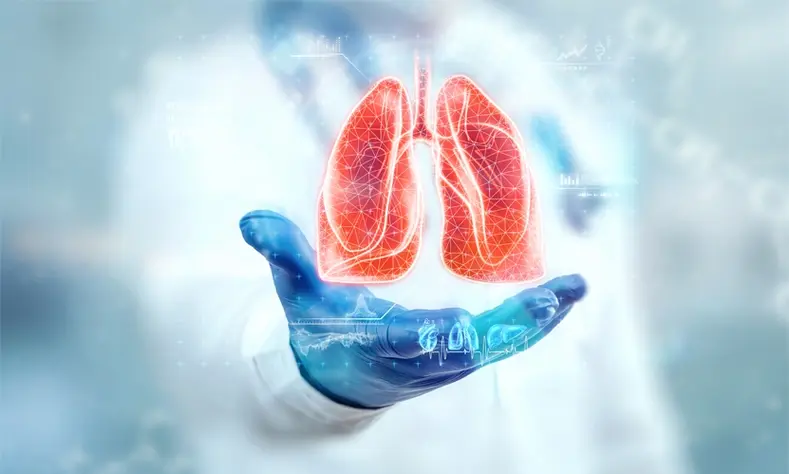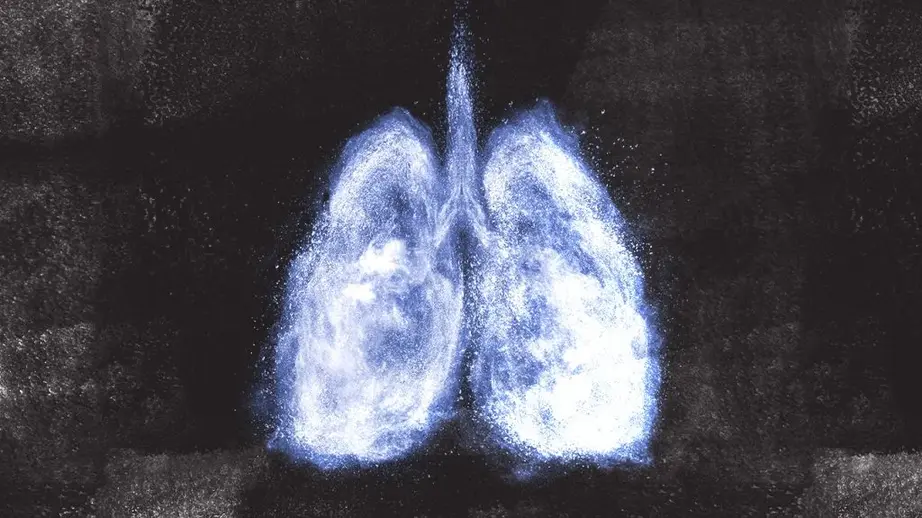Pneumonia is a serious lung infection that continues to be a major cause of illness and death worldwide, particularly among young children, the elderly, and individuals with weakened immune systems. The condition can vary from mild to life-threatening, depending on the individual’s overall health and the severity of the infection. In this detailed article, we’ll explore the causes, types, symptoms, diagnosis, treatment options, complications, and preventive measures of pneumonia, offering a comprehensive understanding of this often dangerous respiratory condition.
What is Pneumonia?
Pneumonia is an inflammatory infection that affects the alveoli (tiny air sacs) in the lungs, leading to fluid or pus filling these sacs. The infection can be caused by a variety of pathogens, including bacteria, viruses, fungi, and parasites. When a person has pneumonia, it becomes difficult for oxygen to pass through the alveoli into the bloodstream, leading to difficulty breathing and other symptoms.
Pneumonia can affect one or both lungs and is categorized based on the specific part of the lungs it affects or the way it was contracted. While it is a common condition, pneumonia can be severe and, in some cases, fatal, particularly when not treated promptly or effectively.
Types of Pneumonia
There are several types of pneumonia, and they can be classified based on how the infection is contracted, the type of pathogen responsible, and the affected lung regions. Here are the main categories:
1. Community-Acquired Pneumonia (CAP)
CAP refers to pneumonia contracted outside of healthcare or hospital settings. It is the most common type and can be caused by bacteria, viruses, and, less commonly, fungi. Streptococcus pneumoniae is one of the most frequent bacterial causes of CAP.
2. Hospital-Acquired Pneumonia (HAP)
This type of pneumonia occurs in individuals who are already hospitalized for another condition. Hospital settings can expose patients to more resistant bacteria, making HAP often more difficult to treat. Ventilator-associated pneumonia (VAP) is a subtype of HAP that affects individuals on mechanical ventilation.
3. Aspiration Pneumonia
Aspiration pneumonia occurs when food, liquid, or vomit is inhaled into the lungs, leading to infection. This type is more likely to affect individuals with swallowing difficulties, neurological disorders, or those who are sedated.
4. Atypical Pneumonia
Also known as “walking pneumonia,” this type of pneumonia typically results in milder symptoms and can be caused by bacteria like Mycoplasma pneumoniae or Chlamydophila pneumoniae. It’s referred to as “atypical” because of the differences in symptoms compared to typical bacterial pneumonia.
5. Fungal Pneumonia
While uncommon, fungal pneumonia can occur in individuals with compromised immune systems, such as those with HIV/AIDS, cancer patients undergoing chemotherapy, or individuals on immunosuppressive medications. Histoplasma, Coccidioides, and Cryptococcus are examples of fungi that can cause pneumonia.
Causes of Pneumonia
Pneumonia can be caused by a variety of infectious agents. The most common are bacteria and viruses, though fungi and parasites can also be culprits, especially in immunocompromised individuals.
1. Bacterial Pneumonia
Bacterial pneumonia is often caused by Streptococcus pneumoniae, but other bacteria such as Haemophilus influenzae and Legionella pneumophila can also cause it. Bacterial pneumonia typically leads to more severe symptoms than viral pneumonia, including high fever, cough with yellow or green phlegm, and difficulty breathing.
2. Viral Pneumonia
Viruses that cause respiratory infections can lead to pneumonia, especially during or after the flu or a severe cold. Common viruses that cause pneumonia include:
- Influenza virus
- Respiratory syncytial virus (RSV)
- SARS-CoV-2 (which causes COVID-19)
- Adenoviruses
- Coronaviruses
Viral pneumonia is often milder than bacterial pneumonia but can be severe in certain populations, such as the elderly or people with preexisting conditions.
3. Fungal Pneumonia
Fungal infections that cause pneumonia are more common in certain regions or among individuals with weakened immune systems. Histoplasmosis, Coccidioidomycosis, and Blastomycosis are examples of fungal infections that can lead to pneumonia. These fungi are usually found in soil, and the infection occurs after inhaling the spores.
4. Aspiration Pneumonia
Aspiration pneumonia occurs when food, drink, vomit, or saliva is inhaled into the lungs instead of being swallowed into the esophagus. Aspiration can lead to infection and inflammation in the lungs, especially if the aspirated material contains harmful bacteria.
Symptoms of Pneumonia
The symptoms of pneumonia can vary depending on the type of pneumonia, the pathogen causing the infection, and the individual’s overall health. Common signs and symptoms include:
- Cough: Often productive, meaning it produces mucus (phlegm) that can be green, yellow, or tinged with blood.
- Fever and Chills: High fever, chills, and sweating are typical in bacterial pneumonia.
- Shortness of Breath: Difficulty breathing or rapid breathing is common, especially during physical activity.
- Chest Pain: Sharp or stabbing chest pain that worsens with deep breathing or coughing.
- Fatigue and Weakness: A general feeling of tiredness or weakness can accompany pneumonia.
- Confusion: Especially in older adults, pneumonia may cause confusion or changes in mental awareness.
- Bluish Lips or Nails: In severe cases, lack of oxygen can lead to cyanosis (bluish skin, lips, or nails).
- Nausea, Vomiting, or Diarrhea: Gastrointestinal symptoms may occur in some cases.
Risk Factors for Pneumonia
While anyone can develop pneumonia, certain factors increase the likelihood of getting the infection or experiencing severe complications:
- Age: Infants under 2 years and adults over 65 are at higher risk.
- Chronic Diseases: Conditions such as asthma, chronic obstructive pulmonary disease (COPD), diabetes, and heart disease can increase the risk.
- Weakened Immune System: HIV/AIDS, cancer treatments, and organ transplants can make individuals more susceptible to pneumonia.
- Smoking: Tobacco use damages the lungs and increases susceptibility to infection.
- Hospitalization: Being in a hospital, particularly in the intensive care unit (ICU), increases the risk of pneumonia, especially ventilator-associated pneumonia.
Diagnosis of Pneumonia
To diagnose pneumonia, healthcare providers typically use a combination of medical history, physical examination, and diagnostic tests. Here are the main steps involved:
1. Physical Examination
The doctor will listen to the patient’s lungs using a stethoscope to check for abnormal breathing sounds, such as crackles or wheezing. They may also check for signs of difficulty breathing or rapid breathing.
2. Chest X-ray
A chest X-ray is one of the most important diagnostic tools for pneumonia. It allows the doctor to visualize areas of the lungs that may be filled with fluid or infection.
3. Blood Tests
Blood tests, including a complete blood count (CBC) and blood cultures, may be done to determine whether the infection is bacterial, viral, or fungal and to assess the severity of the infection.
4. Sputum Test
A sputum test involves analyzing the mucus coughed up from the lungs to identify the specific pathogen causing the pneumonia.
5. Pulse Oximetry
A small device is placed on the finger to measure oxygen levels in the blood. Low oxygen levels can indicate that the lungs are not functioning properly due to the infection.
6. CT Scan
In cases where the diagnosis is uncertain or complications are suspected, a CT scan of the chest may be performed for a more detailed view of the lungs.
7. Bronchoscopy
In rare cases, especially when the infection is severe or unresponsive to treatment, a bronchoscopy may be performed. This procedure allows the doctor to look directly into the airways and collect samples for testing.
Treatment of Pneumonia
The treatment for pneumonia depends on its cause (bacterial, viral, or fungal), the severity of the infection, and the patient’s overall health. Here’s an overview of the treatment options:
1. Antibiotics (For Bacterial Pneumonia)
Antibiotics are the cornerstone of treatment for bacterial pneumonia. The choice of antibiotic depends on the type of bacteria, the severity of the infection, and local resistance patterns. Commonly prescribed antibiotics include amoxicillin, azithromycin, and doxycycline. In severe cases, intravenous antibiotics may be required.
2. Antiviral Medications (For Viral Pneumonia)
For viral pneumonia, antiviral medications may be prescribed if a specific virus, such as influenza or COVID-19, is responsible. In most cases, however, viral pneumonia is treated with supportive care, such as rest, hydration, and over-the-counter medications to relieve symptoms.
3. Antifungal Medications (For Fungal Pneumonia)
Fungal pneumonia is treated with antifungal medications, such as amphotericin B or fluconazole, depending on the specific type of fungus involved. Treatment is often prolonged, especially for individuals with weakened immune systems.
4. Supportive Care
Supportive care plays a crucial role in the recovery from pneumonia, regardless of its
cause. This includes:
- Oxygen Therapy: Supplemental oxygen may be provided to help maintain adequate oxygen levels in the blood.
- Pain Relievers: Over-the-counter pain relievers, such as ibuprofen or acetaminophen, can help alleviate fever, chest pain, and discomfort.
- Fluids: Staying hydrated is important to help thin mucus and ease breathing.
- Cough Suppressants: While coughing helps clear the lungs, excessive coughing can be controlled with over-the-counter cough suppressants.
Complications of Pneumonia
Pneumonia can lead to a range of complications, especially in high-risk individuals. Some potential complications include:
- Pleural Effusion: Fluid accumulation around the lungs, which can cause difficulty breathing and may require drainage.
- Lung Abscess: Pockets of pus can form in the lungs, requiring antibiotics or surgical drainage.
- Bacteremia: The infection can spread into the bloodstream, leading to sepsis, a life-threatening condition.
- Acute Respiratory Distress Syndrome (ARDS): Severe pneumonia can cause widespread inflammation and fluid buildup in the lungs, leading to respiratory failure.
- Respiratory Failure: In extreme cases, pneumonia can cause the lungs to stop functioning properly, necessitating mechanical ventilation.
Preventing Pneumonia
Prevention is key in reducing the risk of pneumonia, especially among vulnerable populations. Here are some preventive measures:
1. Vaccination
Vaccination is one of the most effective ways to prevent pneumonia. Vaccines are available for certain types of pneumonia-causing pathogens, including:
- Pneumococcal Vaccine: Protects against Streptococcus pneumoniae, the most common cause of bacterial pneumonia.
- Flu Vaccine: Protects against the influenza virus, which can lead to viral pneumonia.
- COVID-19 Vaccine: Reduces the risk of pneumonia caused by SARS-CoV-2.
2. Good Hygiene
Practicing good hygiene, such as frequent hand washing and using alcohol-based hand sanitizers, can help reduce the risk of infection.
3. Avoid Smoking
Smoking damages the lungs and weakens the immune system, making it easier for infections to take hold. Quitting smoking can significantly reduce the risk of pneumonia.
4. Manage Chronic Conditions
Controlling chronic conditions, such as asthma, diabetes, and heart disease, can help reduce the risk of pneumonia and its complications.
5. Healthy Lifestyle
Maintaining a healthy lifestyle, including regular exercise, a balanced diet, and sufficient sleep, can strengthen the immune system and reduce the risk of infections like pneumonia.
Living with Pneumonia
Recovering from pneumonia can take time, especially if the infection was severe. During the recovery process, it’s important to follow your doctor’s instructions and allow yourself adequate rest. Even after the infection has cleared, it’s normal to feel fatigued for several weeks. Be patient with your body, and focus on regaining strength.
Conclusion
Pneumonia is a serious and potentially life-threatening infection that affects millions of people worldwide. While it can be caused by various pathogens, including bacteria, viruses, and fungi, pneumonia often shares common symptoms, such as cough, fever, and difficulty breathing. Early diagnosis and prompt treatment are crucial for preventing complications and ensuring a full recovery. With vaccines, good hygiene, and a healthy lifestyle, many cases of pneumonia can be prevented, especially among high-risk individuals.
By understanding the causes, symptoms, treatments, and preventive measures associated with pneumonia, individuals can take proactive steps to protect themselves and their loved ones from this global health concern.




